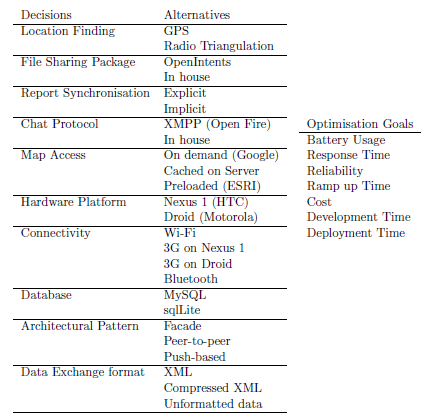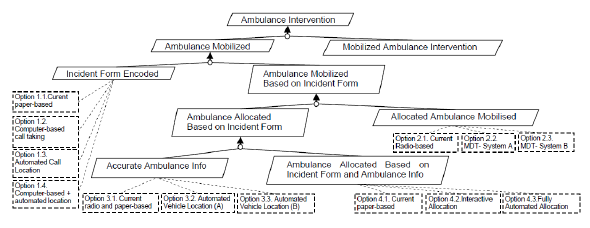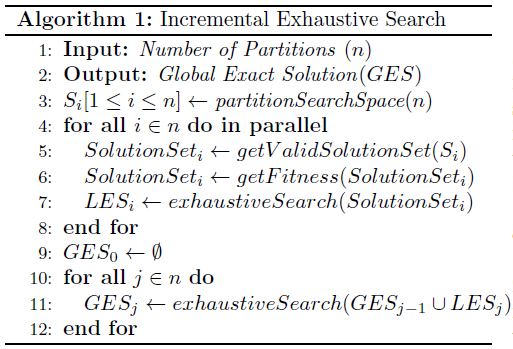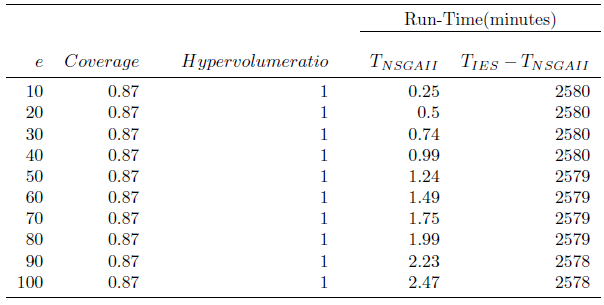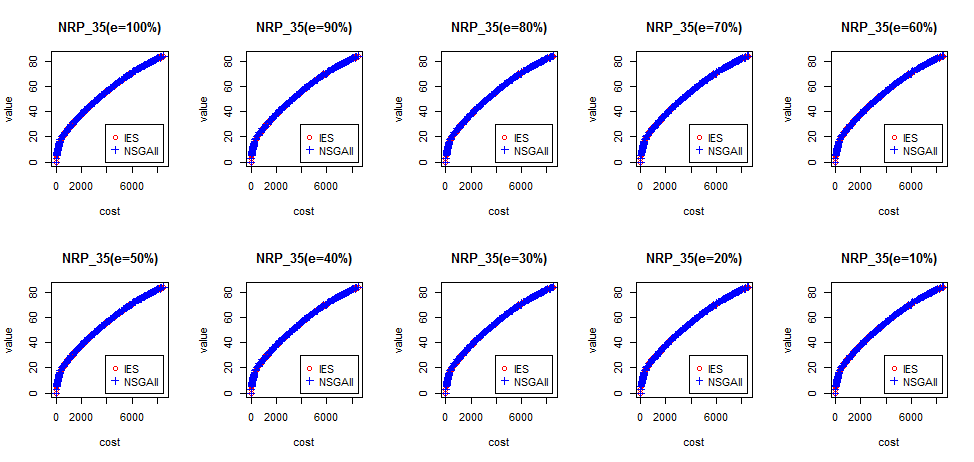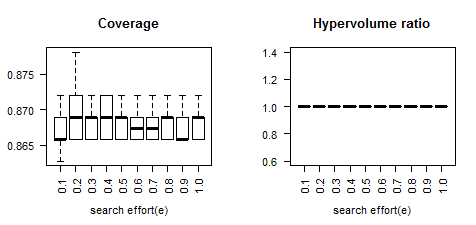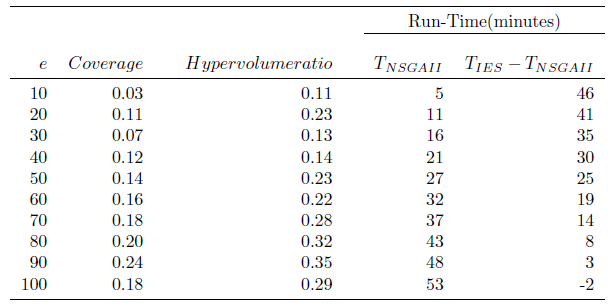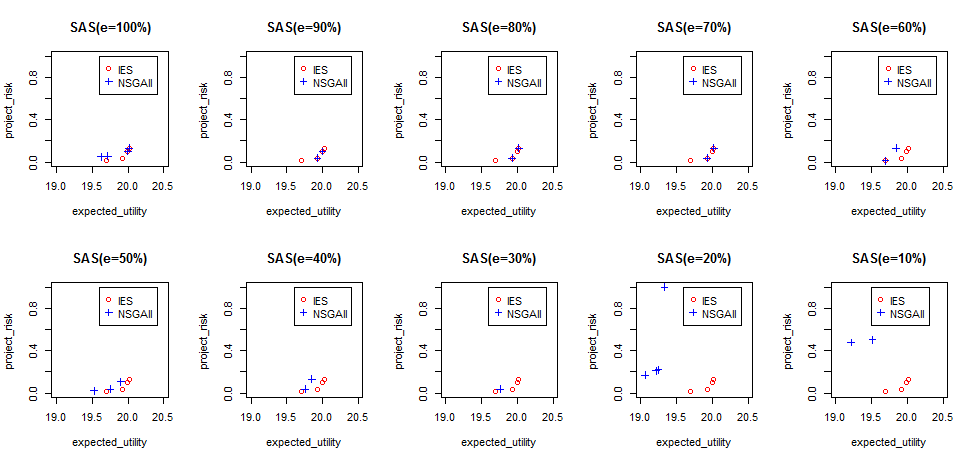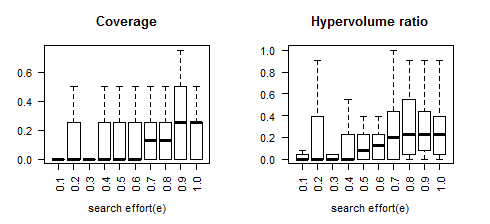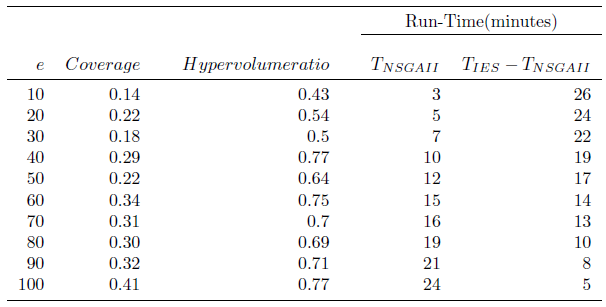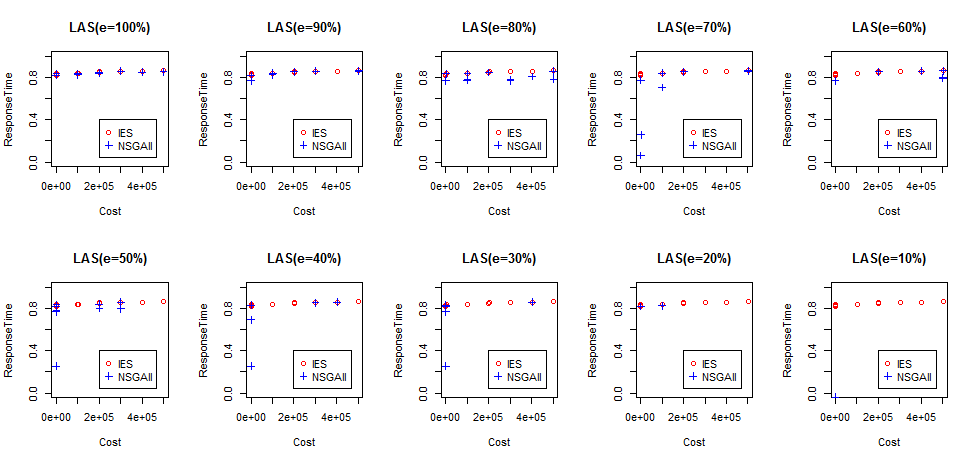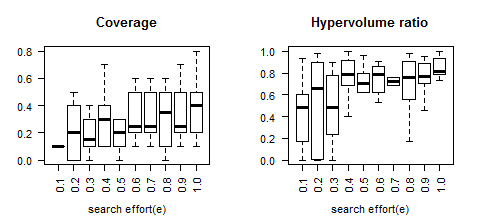Subject Models
Next Release Problem
The NRP model involves selecting a subset of requirements that maximise the total value and minimise the total costs of the selected requirements.
Given that an existing software system is to be evolved and a set of customers, C = {c1, c2,..,cm},
have different concerns the existing system is to address. These customers have different degrees of importance to the company
denoted using a Weight, W = {w1,w2,...,wm}, where wi ∈ [0,1] and Summi=1wi = 1.
Typically, each customer,ci(1 ≤ i ≤ m ), desire a set of requirements Ri ∈ R, where R = {r1, r2,...,rn}
represents all possible requirements to select from. Therefore, a customer ci ∈ C assigns a value denoted by
value(rj, ci) to a requirement rj(1 ≤ j ≤ n ), where value(rj, ci) > 0 if customer i desires an
implementation for the requirement j and 0 otherwise.
The overall value derived by a customer for a given requirement rj(1 ≤ j ≤ n ) is regarded as the
Score which is measured as the weighted sum of importance for all customers.
This forms one of the objectives to be optimised :
Scorej = Summi=1 wi. value(rj, ci)
Implementing the set of requested requirements requires expending certain amount of resources (e.g cost, infrastructure,
man-power etc.) which are always limited. In the NRP model, we use cost as a surrogate for such limited resources needed to
fulfil the requirements to be implemented. Thus, the cost vector for the set of requirements rj(1 ≤ j ≤ n ) is:
Cost = { cost1, cost2,..., costn}
where cost1, cost2,..., costn are the cost for r1, r2,...,rn respectively.
The formulated NRP model ensures that the most important requirements are released quickly, while at the same time attaining the the maximum
benefit from the proposed system faster. Thus, the fitness (objective) functions used in the NRP subject model are
:
Maximise Sumnj=1 scorej. xj
Minimise Sumnj=1 costj. xj
Interestingly, real world systems usually have technical or functional constraints on requirements that need to be satisfied independently
or simultaneously, or a requirement may need to be implemented before another requirement. Thus, for NRP model, we considered three
dependency relations amongst requirements such as And, Or and Precedence relations. The three requirement dependency
relations defined by Zhang et al. are summarised below:
| And |
Define a pair of requirements (i,j) and a set xi such that (i,j) ∈ ξ means that ri is selected if and only if requirement rj has to be chosen.
|
| Or |
Define a pair of requirements (i,j) and a set ϕ such that (i,j) ∈ ϕ (equivalently (j,i) ∈ ϕ) means that at most one of ri, rj can be selected. |
| Precedence |
Define a pair of requirements (i,j) and a set χ such that (i,j) ∈ χ means that requirement ri has to be implemented before requirement rj |
|
